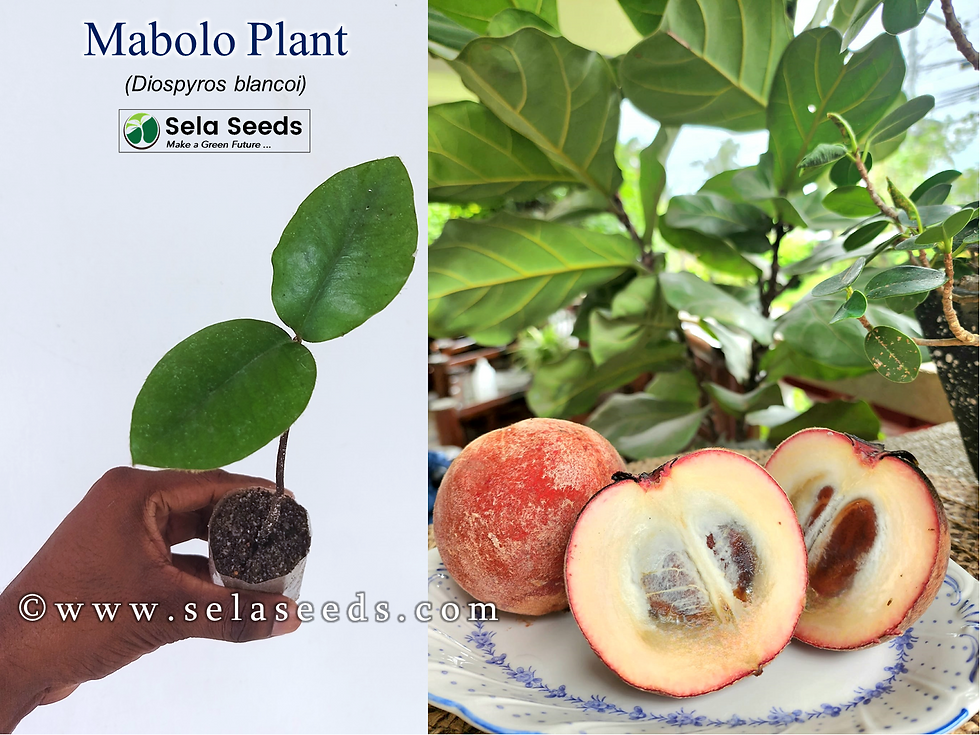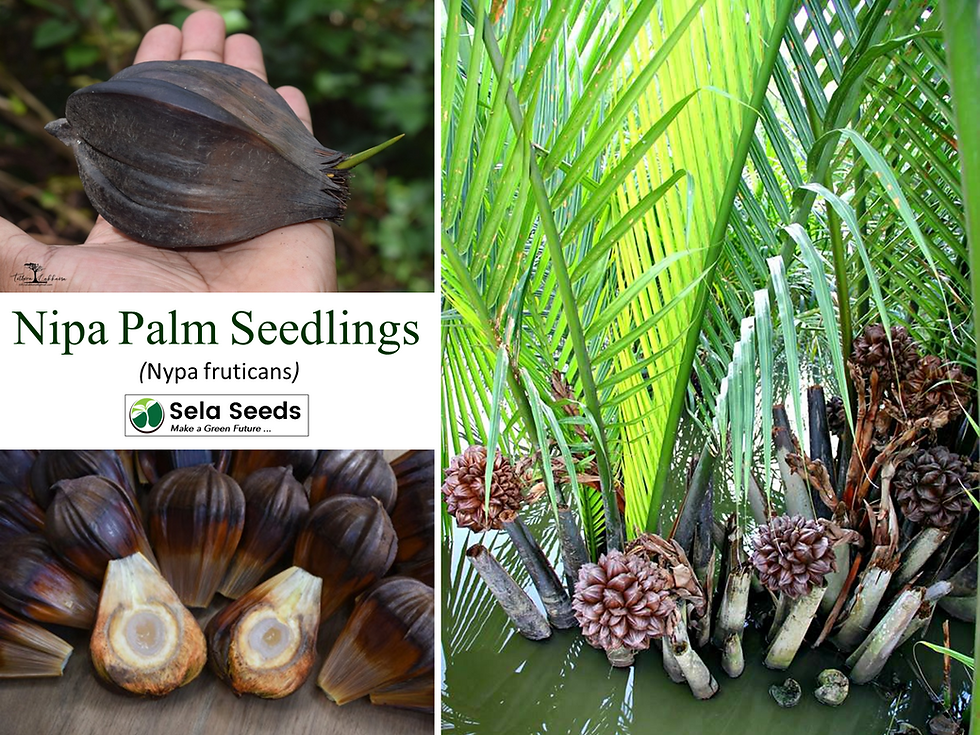Nipa palm seedlings (Nypa fruticans) mangrove palm
Quantity : x2 seedlings
Nypa fruticans, commonly known as the nipa palm (or simply nipa, from Malay: nipah) or mangrove palm, is a species of palm native to the coastlines and estuarine habitats of the Indian and Pacific Oceans. It is the only palm considered adapted to the mangrove biome. The genus Nypa and the subfamily Nypoideae are monotypic taxa because this species is their only member.
Unlike most palms, the nipa palm's trunk grows beneath the ground; only the leaves and flower stalk grow upwards above the surface. The leaves extend up to 9 metres (30 feet) in height.
The flowers are a globular inflorescence of female flowers at the tip with catkin-like red or yellow male flowers on the lower branches. The flower produces woody nuts arranged in a globular cluster up to 25 centimetres (10 inches) across on a single stalk.
The fruit is globular made of many seed segments, each seed has a fibrous husk covering the endosperm that allows it to float.The stalk droops as the fruits mature.When they reach that stage, the ripe seeds separate from the ball and float away on the tide, occasionally germinating while still water-borne.
Distribution and habitat
Nipa palms grow in soft mud and slow-moving tidal and river waters that bring in nutrients. They can be found as far inland as the tide can deposit the floating nuts. They are common on coasts and rivers flowing into the Indian and Pacific Oceans, from India to the Pacific Islands. The palm will survive occasional short-term drying of its environment. Despite the name "mangrove palm" and its prevalence in coastal areas, it is only moderately salt tolerant and suffers if exposed to pure seawater; it prefers the brackish waters of estuaries.
Uses
Nipa palm leaves used as thatching in a Tagbanwa stilt house (kamalig) in the Philippines
The long, feathery leaves of the nipa palm are used by local populations as roof material for thatched houses or dwellings. The leaves are also used in many types of basketry and thatching. Because they are buoyant, large stems are used to train swimmers in Burma.
On the islands of Roti and Savu, nipa palm sap is fed to pigs during the dry season. This is said to impart a sweet flavour to the meat. The young leaves are dried, bleached and cut to wrap tobacco for smoking, this practice is also found in Sumatra.
In Cambodia, this palm is called ចាក cha:k; its leaves are used to cover roofs.
Roof thatching with the leaves occurs in many places in Papua New Guinea. In some coastal areas, the rachis is used for walls in houses, and the leaflets are used for ornaments. The epidermises of the leaves are used as cigarette papers.
Food and beverages
The young flower stalk and hard seeds are edible and provide hydration.
In the Philippines and Malaysia, the inflorescence can be "tapped" to yield a sweet, edible sap collected to produce a local alcoholic beverage called tuba, bahal, or tuak. A fruit cluster is ready to be tapped when the unripe fruits are at their peak sweetness. The cluster is cut from the stalk about six inches down, and mud is rubbed on the stalk to induce sap flow. Sap begins flowing immediately if the fruit maturity was correctly gauged. A bamboo tube or a bottle is fitted over the cut stalk and the sap is collected twice daily, cutting a half centimeter slice off the end of the stalk after each collection to prevent it from gumming over. Sap flow will continue for 30 days per stalk, and the nipa flowers continuously throughout the year, providing a continuous supply of sap.
Tuba can be stored in tapayan (earthenware balloon vases) for several weeks to make a kind of vinegar known as sukang paombong in the Philippines and cuka nipah in Malaysia. Tuba can also be distilled to make arrack, locally known as lambanog in Filipino and arak or arak nipah in Indonesian. Young shoots are also edible; the flower petals can be infused to make an aromatic tisane. Attap chee (Chinese: 亞答子; pinyin: yà dá zǐ) (chee meaning "seed" in several Chinese dialects) is a name for the immature fruits—sweet, translucent, gelatinous balls used as a dessert ingredient in Thailand, Malaysia, the Philippines, and Singapore, that are a byproduct of the sap harvesting process.
In Indonesia, especially in Java and Bali, the sap can be used to make a variant of Jaggery called gula nipah. In Sarawak, it is called gula apong.
In Thailand, leaf is used for dessert.
In Cambodia, its leaves are used for wrapping cakes (such as num katâm), and the flowers are sometimes used to make sugar, vinegar, and alcohol.
Biofuel
The nipa palm produces a very high yield of sugar-rich sap. Fermented into ethanol or butanol, the sap may allow the production of 6480–20,000 liters per hectare per year of fuel.By contrast, sugarcane yields roughly 5200 liters of ethanol per hectare per year, and an equivalent area planted in corn (maize) would produce only roughly 4000 liters per hectare per year, before accounting for the energy costs of the cultivation and alcohol extraction.Unlike corn and sugarcane, nipa palm sap requires little if any fossil fuel energy to produce from an established grove, does not require arable land, and can make use of brackish water instead of freshwater resources. Also unlike most energy crops, the nipa palm does not detract from food production to make fuel. In fact, since nipa fruit is an inevitable byproduct of sap production, it produces both food and fuel simultaneously.
top of page
$55,00Prijs
Nog maar 6 op voorraad
Gerelateerde producten
bottom of page
































